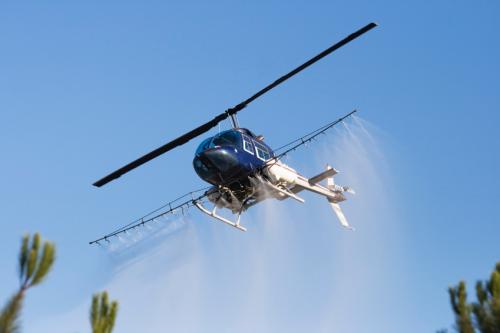26
Aug
Oregon Spray Pilot Fined $10,000 for Pesticide Drift that Residents Say Poisoned Them
(Beyond Pesticides, August 26, 2014) Nearly a year after residents in Curry County Oregon were sprayed with herbicides, the pilot responsible for the incident had his license suspended for a year and was fined $10,000 by the Oregon Department of Agriculture (ODA). The Pacific Air Research  Company, which employed the pilot, was also fined $10,000 and had all its licenses revoked for a year for providing false information to the state. The initial incident happened in October 2013, when residents complained of experiencing rashes, headaches, asthma, and stomach cramps right after the application.
Company, which employed the pilot, was also fined $10,000 and had all its licenses revoked for a year for providing false information to the state. The initial incident happened in October 2013, when residents complained of experiencing rashes, headaches, asthma, and stomach cramps right after the application.
As reported in the The Oregonian, after the investigation, ODA was criticized by environmental groups and the general public for not doing a proper investigation. It took 6 months for any information to be disclosed even though the poisoned residents requested it. Pacific Air Research at the time of the incident stated that the only chemical being sprayed was glyphosate. Then, ODA conducted an investigation and concluded that the spray was not directly linked to the conditions displayed by residents. Unsatisfied with the state’s findings, a local environmental group, Beyond Toxics, forced ODA to produce all its records, which confirmed that 2, 4-D and triclopyr were the actual chemicals used. The group this month filed a lawsuit challenging portions of the Oregon Right to Farm and Forest Law (ORS30.936) on pesticide drift from forestry operations onto private property.
2, 4-D is a highly toxic chemical which has been linked to cancer, reproductive effects, endocrine disruption, and kidney and liver damage. It is also neurotoxic and is toxic to beneficial insects (such as bees), earthworms, birds, and fish. Scientific studies have confirmed significantly elevated rates of non-Hodgkin’s lymphoma for farmers who use 2, 4-D. Triclopyr originally developed for woody plant and broadleaf weed control along rights – of- way and on industrial sites, triclopyr is also used in forest site preparation.
When we started realizing we were not dealing with accurate information, we quit sharing information with the local community,” ODA director Katy Coba told The Oregonian. “In hindsight, that’s the part where we clearly understand now that it caused a lot more consternation than if we’d continued sharing information. In the future, we would handle a similar situation much differently.”
Lisa Arkin, director of Beyond Toxics noted in The Oregonian that she was pleased to see the penalty, but said it happened only because of local residents’ persistence. ODA “came out swinging because the great research by the community and the community pressure that was put on the agency.”
In other states, the same information would be shared within hours, not months, she said.
“There’s no reason in the world why the Department of Agriculture withheld the information,” she said. “They put their civil investigation before public health.”
Unfortunately, spray incidents such as these are all too common. Triangle Lake, another Oregon Community has experienced similar pesticide exposures from the aerial application of herbicides to Timberland. In 2011, atrazine and 2, 4-D were found in the urine of residents around Triangle Lake. After these incidents, state and federal agencies launched the Highway 36 Corridor Public Health Exposure Investigation, which resulted in the Oregon State Forester requiring pesticide applicators to turn over three years of forestry pesticide spray records from private and state timber operations.
In Oregon, there are no required buffer zones around residential land, similar to those along fish-bearing streams, and the state does not require notification of residents near timberland. Timberland owners do have to notify the Oregon Department of Forestry, and people can pay a fee to receive those notifications, but they do not specifically disclose that chemicals that will be used, or the day and time of the spraying. Aerial herbicide application is also only used on private land as public forest land is managed without these practices.
For more information on forestry management practices watch Lisa Arkin’s talk from the 32nd National Pesticide Forum in Portland, Oregon. (Her talk begins at 19:53) Lisa Arkin has served as the Executive Director of Beyond Toxics since 2006, and helped publish the in-depth analysis of herbicide use in Oregon’s industrial forestry practices, Oregon’s Industrial Forests and Herbicide Use: A Case Study of Risk to People, Drinking Water and Salmon.
All unattributed positions and opinions in this piece are those of Beyond Pesticides.
Source: The Oregonian











POISONOUS TOXIC CHEMICALS HAVE DRIFTED FROM SPRAYERS ONTO ORGANIC FARMS WHICH ARE NOT
SPRAYED BUT TREATED NATURALLY WITHOUT SPRAYS.
ORGANIC MEANS NO CHEMICALS ARE USED SO ….
THE RULING IS IN THE FOLLOWING ~
October 6th, 2014 at 5:29 pmhttp://www.naturalnews.com/033216_gmo_contamination_lawsuits.html